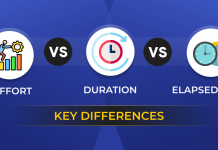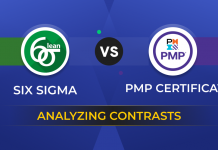
Today, there are so many projects in an organization and there is so much project mismanagement that they are losing close to 109 million dollars for every billion dollars spent on projects and programs across the globe. There are many project management mistakes that are costing projects big bucks and are unable to successfully finish them where they remain in limbo for a long period of time. Among project management mistakes there are top 10 mistakes that account for 90% of failures. So, let us have a look at what are those top 10 project management mistakes that you need to avoid at all costs. With project management best practices one can find better solutions to all the mistakes.
1. Keeping the Entire Project Plan in Your Head:
You may think the project plan is simple and there is no need of documenting the same as you believe you can all do it in your head. Sorry, you cannot, even if you remember everything, it is one of the most stressful ways to get the job done as it gets more and more complicated as the project progresses. Moreover, you cannot show the project plan that is in your head to your project board, customer, or your team who will be working on it.
Solution: A simple Gantt chart will be of immense help here and it shows who will do what and when in an all easily understandable manner.
2. Not Employing the Right Project Manager:
When a resource is allocated for a project, most of the effort is gone towards finding the right resources than employing the right project manager. In many cases, project managers get picked due to their availability and not based on their skill set. In that scenario, an inexperienced project manager will not be in a position to lead the project and will be doomed to failure.
Solution: It would be wise to choose a project manager whose skill set matches the unique requirements of the project.
3. Agreeing to Overly Optimistic Timelines:
This is one of the most common project management mistakes, where the project manager vaguely promises ridiculous short timeframes for project deliverables by saying things like “Maybe” or “I will try”. By doing this you may gain the confidence of your customer in the beginning. But, if you keep missing your deadline after the deadline because you promised in the beginning, it will lead to a very unhappy customer which leads to distrust. Moreover, your project team will be unhappy because you agreed to such a thing in the first place.
Solution: Be assertive from the beginning with a straight “Yes” or a “No” and back up with a clear plan which shows how you are going to do it and why you need more time to get things done. Again a Gantt chart can be of immense help here.
4. Offering Best Probable Project Outlines:
Senior management will pressure you to get that optimistic number (X weeks and Y dollars) which they can promise to the customer by asking “What is the best you can do if everything falls in place for this project?” By this, they are asking you to make up an imaginary number where you have not considered all the aspects that relate to the project so that they can promise to the customer and look bad down the line when you both fail. The moment you give them that optimistic number, the customer is expecting it and you are in trouble from the beginning.
Solution: Instead of making up an imaginary number by not overseeing potential project blind spots. Understand each and every step of the project through its lifecycle. For instance, if there is a new supplier where the IT is unproven then committing “I might be able to do it in 4 weeks,” say, “Because this is a tricky job with a new IT supplier, it could easily take as many as 8-10 weeks”. This is a realistic number, though your boss may feel this number is uninspiring, they will feel good when the project is completed without any hassle with proper timelines.
5. Not Hearing out Your Team:
Project managers with strong personalities, experience, and in-depth understanding of the project are prone to forget that their team also has some ideas. Your project team might have lots of ideas, because you did not hear your team or because you did not create an open communication channel between you and your team, you are narrowing down your ideation to yourself. You are missing out on brilliant brainstorming sessions where you might unearth the next best possible idea to get things done in a project.
Solution: As a project manager you have to involve your team and get inputs at several junctures in a project lifecycle:
- Right from the beginning when you list out the tasks required in a project
- While planning the correct order of the tasks that need to be performed in a project
- While making a plan to mitigate risks in a project
- While creating a rescheduled plan and while incorporating change requests in the project
6. Not Getting a Senior Management Buy-In:
A project without a senior executive buy-in is like a ship without sails, it wanders off in all directions except where the wind is blowing.
Solution: Any person from the senior management should own the project from the beginning of the project to the end, somebody who is personally invested in the project’s success”. In fact, when a project lacks a project sponsor, things tend to fall apart very quickly.
7. Lack of Transparent Objectives and Improper Success Metrics:
Not many projects fail due to poor planning or the inappropriate skill set of the project manager. It is because there are no clear/transparent objective and success metrics to identify whether the project was a success or failure.
As a project manager you should question yourself what does the project do to the business of delivering? This is in fact a difficult question to get an answer to as it needs more thought than what you might expect. When you have a clear-cut answer to your question, you will be better able to relate to the project and incorporate metrics that actually make sense and work towards it.
Solution: Industry experts use the acronym called DUMB – doable, understandable, manageable, and beneficial. Introspect hard about what you are doing and why you are doing certain things in a project. In fact, ask the customer to help you to define the success metrics for the project.
8. Inability to Manage Project Scope:
This is one of the main causes of project failure. It is a conflicting term with both the project manager and the customer. Change is inevitable during a project, when there is no agreement between the customer and the project manager regarding the project scope, managing scope creep down the line will be very difficult and it may even derail the project from its actual destination.
Solution: The project manager needs to ensure that the scope of the project has been agreed upon at the beginning itself. The project manager has to create a process to handle change requests which then have to be assessed for the change in the impact on the project budget and schedule. The change request then should be approved by the Project Board. If there is a small change that hardly deviates from the scope of the project, the project manager should be capable enough to approve it.
9. Inability to Let go of Micromanaging Your Team:
One of the major reasons for conflicts in a project is the project manager’s inability to let go of micromanaging their project team. Project team members do not need continual supervision from their project managers all the time, team members believe they are in the team because they have the right skill set and expertise for the project. Team members need to feel that they are empowered, valued, and held responsible for good or bad things in a project. Micromanaging destroys the bond of trust and leads to a lack of motivation and confidence during the project.
Solution: As a project manager it can be hard to let go and trust others that they can do justice to the project and its deliverables. However, when you let go of micromanaging, that trust is always repaid on most of occasions. Working as a team will bring out the best attributes in your team members, and down the line, you can channel their strengths to the right aspects of the project. Empower them than dictating them.
10. Not Evaluating Your Completed Project:
Many project managers want to complete the project in a jiffy, especially in the end as nobody wants to evaluate a project as they do not want to experience the whole thing for a second time. But then without a review, you do not know what were the learning points and this could help other project teams down the line with your project learning points. Senior management should ensure project managers review the project once it has been successfully completed.
Solution: Evaluating the pros and cons of the project is a simple task. You just need to ask a few questions such as: what was good and what we can repeat; what to avoid; what could have been done better etc. Document all the reviews in a file and keep them in a central repository so that others can go through and learn from them.














